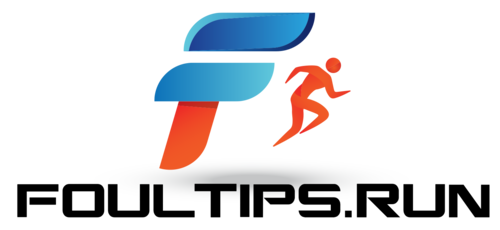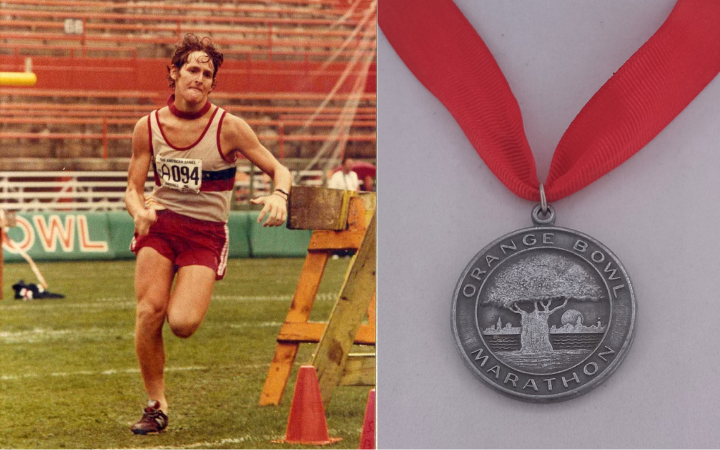
by Coach Adolfo Salgueiro | Jan 24, 2023 | Article, Opinion, Personal, Reflection
By Coach Adolfo Salgueiro
I still can’t believe that it has been 40 years since my first marathon. Four decades since that unforgettable January 22nd of 1983 inside the old Orange Bowl Stadium in Miami. 14,610 days have passed since that unprepared 17-year-old higschooler crossed a finish line that became the gift that kept on giving.
Since I can remember, I wanted to run a marathon. Not sure why. Maybe because I read about the athletics exploits of Abebe Bikila, Emil Zatopek or contemporaries like Frank Shorter and Bill Rogers. Who knows? Somehow, I always loved the extremes. I started running when I was 12 or 13 while living in Caracas, Venezuela, and at 15, ran my first 10K race. Then, a couple of months after turning 17, my dad told me he was running the Orange Bowl Marathon in January 1983, and if I trained, he would take me to Miami. Maybe I just wanted the trip and a few days off school, or it could have been a legitimate attraction for the physical challenge. Regardless, what I know is that 6 weeks later I was lining up at the foot of the iconic home of the Miami Dolphins, who eight days later were taking on the Washington Redskins in the Super Bowl.
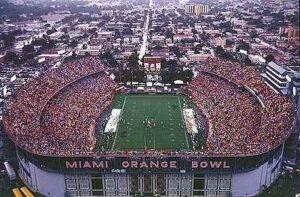
The Miami Orange Bowl stadium (1937-2008) seated 72,319, hosted 5 Super Bowls and was home of the Miami Dolphins from (1966-1986)
I’ve written before about that race. So, on this anniversary I don’t want to reminisce about that particular day, but on what the race has meant to me throughout my life. Last year, on the 39th anniversary of the marathon, I wrote a memoir about that day because I didn’t want details to be forgotten. If you would like to read more about it, please click here. I also wrote a post about getting my finisher’s medal 37 years later, back in 2020. If you want to read about it, please click here.
After that magical morning, 40 years ago, even if I never ran another step in my life, I was a marathoner. It is a label that sticks forever. It doesn’t fade away with time, or by forgetting the exact date and finishing time, or by never wearing a pair of running shorts again.
I kept running for a handful of years after my first marathon. By the time I turned 21 I had four under my belt, with a couple of them in the 3:30 range. I ran through my first three years of college and even had escalated disagreemtns with my girlfriend, who at times was fed up with not going out with our friends on Saturday nights because I had a Sunday morning long run. Many a time I had to put my foot down and state that I would drop her before my training. Today I would have handled it in a different way, but that was then.
As I have mentioned in other writings, as I was training to go sub-3 in 1986, I had a devastating non-running injury on my left knee that left me on the sidelines. It was such a demoralizing blow that I stopped running for decades. While not running I discovered the pleasures of sleeping in on weekends. I didn’t want to have the same issues with new girlfriends, so I went out partying on Saturday nights, and on Friday nights, too. I focused on getting my career in sports journalism started, graduating from college and all the stuff “normal” people do when they don’t need to wake up early to run long next day. The day I turned 18, I went to bed at 8PM because I was running 30Km (19 miles) next day as part of my training for the NYC Marathon. What a weirdo!
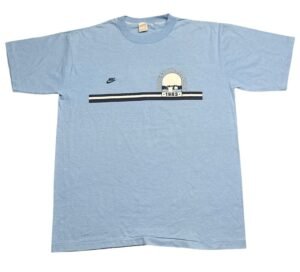
There is not much to be found online about the 1983 Orange Bowl Marathon. Surprisingly I found this cotton race shirt in eBay for “just” $149,99. Thanks, I’ll pass.
Yet, somewhere deep inside, I always knew I had one more marathon in me. Just one, to remind myself I could still do it, or to fool myself into thinking I was still as good as when I was a teenager, or to revisit old glories, or to show my young son what you can accomplish when you work hard towards a difficult goal. Whatever it was, I still wanted to hit the asphalt and take that 26.2 trip once more. Just once.
But sometimes you cross paths with the wrong people and they clip your wings. At 39, after a 2nd knee surgery in July 2004, I told the doctor I still had one more marathon in me and asked if he thought my knee could take it. He told me in no uncertain terms that I shouldn’t and couldn’t. I was stupid enough to take his word for it.
But one day, out of the blue I started walking for hours at a time, feeling good about it and experiencing the runner’s high once again. I found racewalking and then racewalked four half marathons, transitioning to the 26.2 at the 2012 Philadelphia Marathon. Three years and two more marathons later I realized that I just took the doctor’s word and did not run because he said so, not because I tried and failed. So, I got my running restarted and ran my first marathon since 1985, in 2017. Five years, four marathons and an open-heart surgery later, I am still running and looking towards my next 26.2-mile adventure.
The Marathon Training Academy podcast runs a great tag line: “You have what it takes to run a marathon and change your life”. I certainly had what it took to run it again, and my life hasn’t been the same since I completed that 2017 NYC Marathon after I became a runner for the 2nd time; nor since I racewalked the Philadelphia Marathon in 2012 after a 26 year hiatus, nor after that magical morning at the Orange Bowl Stadium, 40 years ago, this week, when my lifetime love affair with the mythical 26.2 monster got started.
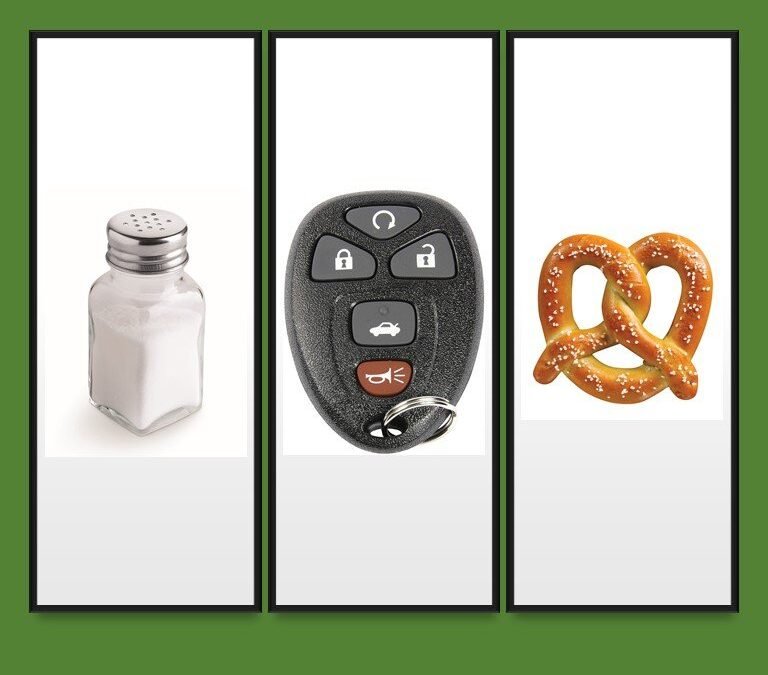
by Coach Adolfo Salgueiro | Mar 8, 2022 | Article, Personal
Edited by Coach Adolfo Salgueiro
As runners we have all experienced the ecstasy of triumph and the agony of defeat. It could be the thrill of a PR, a surprising podium, the misery of bonking when you started too fast or just hitting the wall. Maybe the unexpected happened and we had to resort to creative, unorthodox measures that in retrospective we are not proud of, but at the time seemed perfectly valid.
Here are some of those stories. Somehow, I believe there will be more than one of these posts, so I added the “Part 1” to the title.
Sue Behrens
A1A Half Marathon 2022
Ft Lauderdale A1A Starting Line 5am.
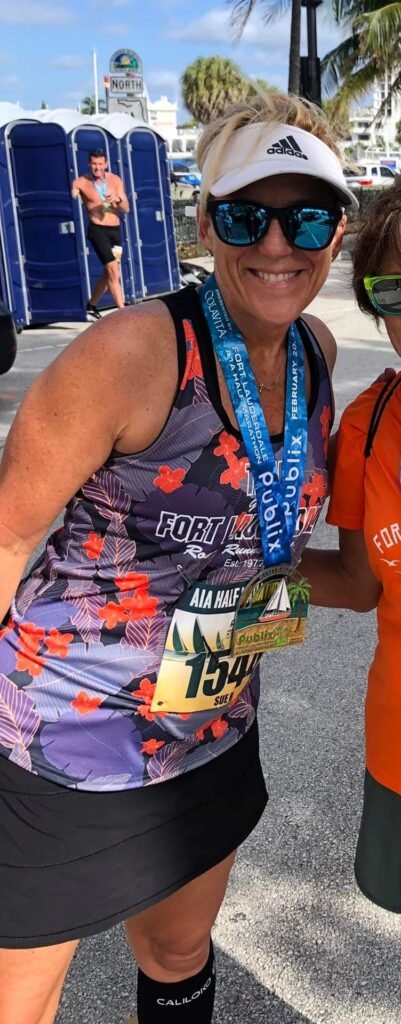
With a medal but without a key fob
I like to run in a Lululemon skort which is a skirt with shorts. The Lulu skort is well designed with a pocket on each leg and that’s where I stash my phone. There is also a smaller zipped pocket at the center back of the waist perfect for keys and gels. Pre-race, like about everyone else, I get in line at the porta-pottys and that’s where things took a dive. Each line was at least 5 deep and once it was my turn, there was complete darkness inside.
As I pulled my skirt down, I found my bib was not only pinned to my tank but also to the skirt! I had to contort so I wouldn’t rip anything. Straight to business thinking I would re-pin once out of the porta-potty and back in the streetlight. When I pulled everything back up, I heard a bang and felt the seat ride up with my skirt. Panicking I felt for my phone and thankfully it was still in the side pocket. Thinking I dodged a bullet I stepped out and the next runner hopped in. I re-pined the bib and joined the crowd awaiting the start. While downing my energy gel I reached back to check on my car key fob and the zip pocket was empty. Unzipped and empty. Crap! literally crap as I realized that the bang, I heard was my car remote dropping into the pitch-black porta potty. UGH! Panic, what to do?
As race start was minutes away and the lines now doubled, I had no choice but to be positive and get the run done. The plan was to locate the Lost and Found after the run and then check each stall when the lines were lessened. Hoping that the fob fell onto the floor and not into the bowl. No such luck. It must have fallen into the bowl. No fobs were turned in, so I had no key. Thankfully, I’m local, one town south and my husband was able to grab the spare fob, drive it up and hand it off to me after the race. From what I have researched it going to be at least $300+ to replace, making this most expensive half marathon I have run!
Rube Urieta
Space Coast Marathon 2015
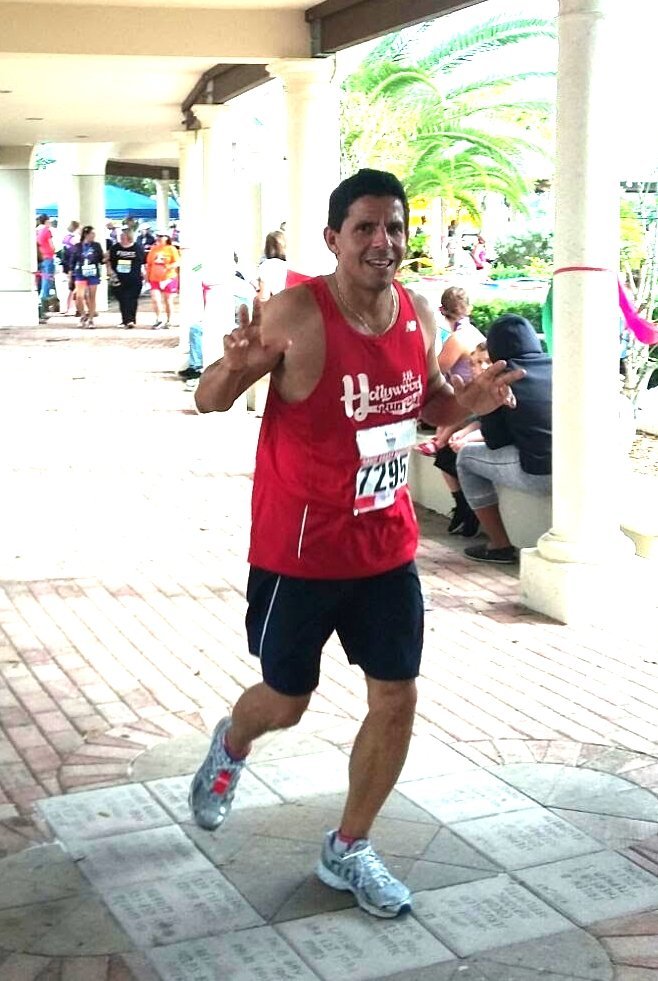
Kindness from a stranger at Mile 17
My first mistake was to believe I could run a marathon without proper training. So, needless to say my legs started cramping up after mile 13. This continued on an off. However, close to Mile 17, both legs cramped so bad, I fell to the side of the road. At that moment, many things came to mind, like am going to be the first runner to be picked up by the emergency golf cart, or can my legs unlock from this painful situation. And while this thought was rushing through my head, suddenly, a female runner stopped and asked: “Are you OK?”
After explaining my situation, she told me to open my hand. She proceeded to pull out something from her belt and sprinkled it into my hand. Then she told me to lick it and reassured me it I was going to be able to stand up and continue. Right there, I realized she gave me salt. The lack of sodium caused the whole situation.
When I tell my friend about my ordeal, they often ask me: how can I trust a stranger to give me something and just taking it so blindly? My answer is: “In this sport you know people, young and not so young, with diverse backgrounds and goals. Some of them have been running for years, some only for weeks. However, we runners tend to trust each other. And to that fellow runner that helped me out, back in 2015, thank you for spreading the sportsmanship.
Adolfo Salgueiro
NYC Marathon 1983
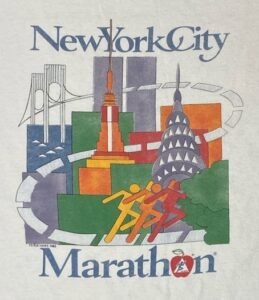
Another version of Seinfeld’s “The Marble Rye”
It was my second marathon and at 18, I thought I knew everything. So, I did not have breakfast before the race, never considering the 10:30 AM starting time. It was a cold and rainy day for an undertrained, young runner. Around 2:30 PM, being awake for about 10 hours and after 20 miles of running, I was starving. This was an era before gels and chews. So, as I was walking, defeated, down 5th Avenue towards Central Park, I saw among the spectator, a kid, maybe 7, with a big, hot pretzel that looked like heaven.
I resumed my running and approached the sidewalk, yanked the pretzel from the kid’s hand, and then ran into the crowd of runners as fast as I could so I couldn’t be identified or caught. I am not proud of this but somehow, I was able to justify the dirty deed. The carbs and calories allowed me to get a second life and finish the race.
When I ran New York 34 years later (2017), I thought of that kid as I was running towards Central Park. He must be now in his early 40s and hopefully has an interesting story to tell about cheering in the marathon.
There are plenty more stories out there that deserve to be preserved. Do you have one? Please email them in 250-350 words to foultips.running@gmail.com, or leave them as a comment here, and I will be publishing additional chapters of this saga, very soon.
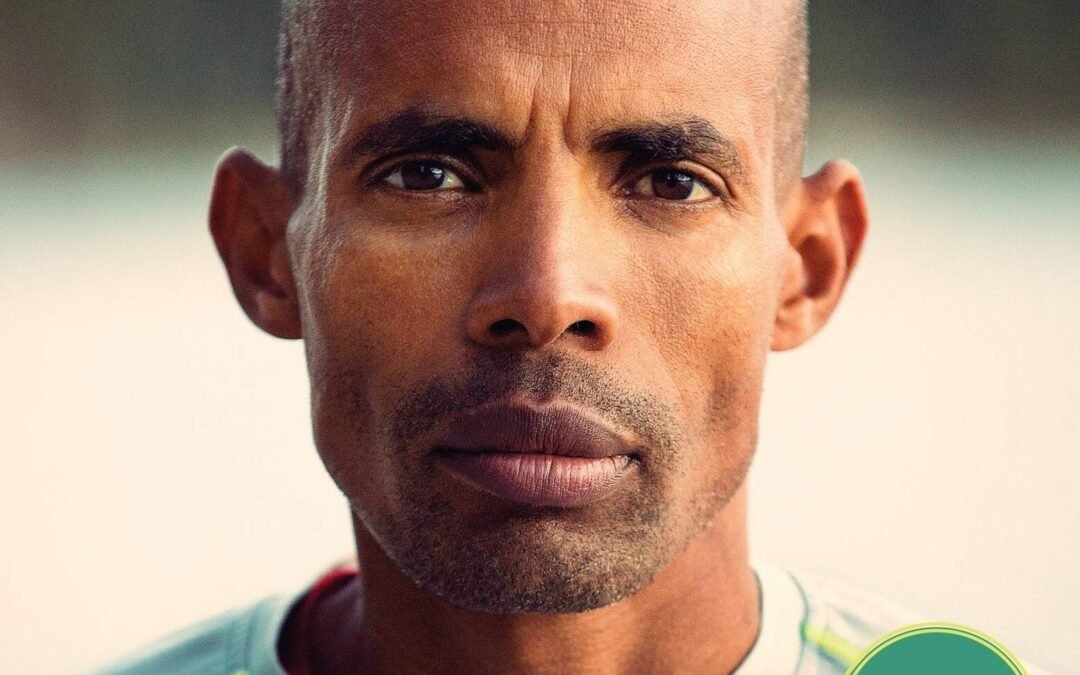
by Coach Adolfo Salgueiro | Feb 9, 2021 | Book Review, Opinion
By Meb Keflezighi (With Scott Douglas)
Reviewed by Coach Adolfo Salgueiro
When we talk about the top US marathoners in the United States during the first fifth of the 20th Century, the name of Meb Keflezighi automatically jumps to the forefront. If you don’t consider him at the top of the list, which you are entitled to, it seems difficult he won’t be on your Top-3 or Top-5. He is the only runner to ever win Boston, New York and earn an Olympic medal. And even though he only won 3 of his 26 career marathons (hence the name of the book), his personality, constant top-level performances and contagious smile, made him an icon on the world stage between 2002-2017.
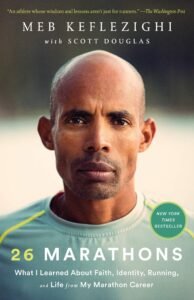
A good book, well written and worth the time and the money
In his latest book, Keflezighi goes into detail about each one his 26 marathons. How he trained, what were his life challenges at the time, how he performed and the sports and life lessons he took from each one of them. He enjoys and doesn’t shy away from the glory of his successes, yet at the same time makes himself vulnerable by taking us through his failures and how to deal with them when you are expected to perform at a certain level and you just can’t.
This is a short book, about 250 pages, and a very pleasant read. Succinct chapters allow you to soak in a marathon or two in each sitting, without being overwhelmed by excessive details.
At times it becomes difficult to relate to Meb’s running experiences because 99.9% of runners will never need to ponder if we are ready to respond to Eliud Kipchoge’s surge in the Olympics or how to prepare for what may come to us in the last 10K of the New York City Marathon when you enter First Avenue as part of the leading pack. But that doesn’t matter. We read books about great baseball or football players though we will never be on the field with them at the next World Series or Super Bowl. Meb’s tales from the front are well told and through his words, he does bring us with him to that place we will only see when we are watching a race on TV.
The book is geared towards life lessons on planning, patience, adjustment to goals, change of expectations made on the fly and many other subjects that mean something to us when they come from first-hand experiences from a world-class athlete who has been there not one, but many times.
A leitmotif for Meb’s career was his spouse’s support. He doesn’t hide that his wife, Yordanos, was the family’s backbone that permitted him to achieve his goals. As runners, we all need the support of our wives, husbands or significant-others to achieve what we are looking for, and the Keflezighis show us how.
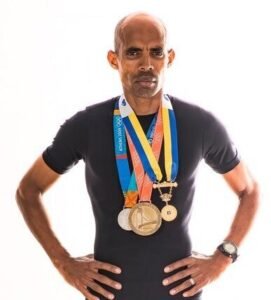
Only athlete ever to win Boston, New York and an Olympic medal
I loved Meb’s conclusion about his career as a marathoner. We may not be able to relate to some of his tales from the leading pack, but everyone who has completed multiple marathons, somehow will see himself/herself in this:
“I did twenty-six marathons over fifteen years, one for each mile of the race. I learned that the marathon can hate you or love you. It can make you go though misery or experience great joy. I learned that no matter what it happens, eventually you’ll look back and think, ‘That was a beautiful thing. I’m glad I did it.”
If you want to know more about Meb’s personal life, his childhood in Eritrea, move to the United States, life and career, “Run to Win” is your book. “26 marathons” is a good book, well written and worth the time and the money you will spend on it. But I do think it is important to understand what the book is and what it is not, before you tackle it, so you can be in the right frame of mind when you read it and thus, get the most out of it.
If anyone knows or has access to Meb, please thank him on my behalf for both books and for being an inspiration to the running community throughout his long career. His name is up there with Alberto Salazar, Bill Rodgers, Frank Shorter, Ryan Hall, Clarence De Mar, etc. in the pantheon of great US runners of all time.
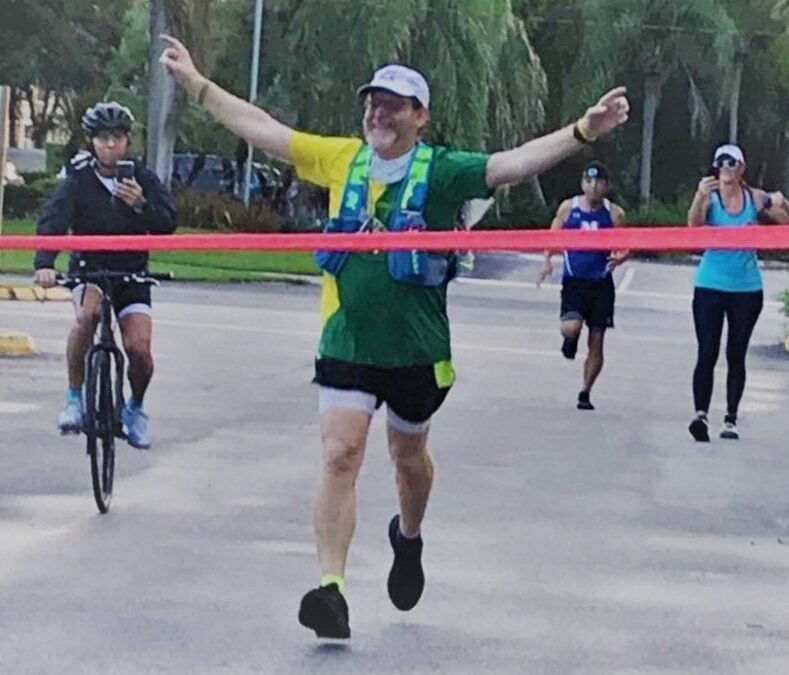
by Coach Adolfo Salgueiro | Oct 27, 2020 | Article, Personal, Reflection
By Coach Adolfo Salgueiro
When the New York City Marathon decided to go virtual, I received an invitation to participate in it, not sure why since I did not register even for the lottery. I had no interest. Why would I do a virtual New York when I’ve done it in person twice and it is one of the most amazing running experiences, ever? But the more I thought about it, having a 26.2 on my schedule would give me a tangible goal that, otherwise, there is no chance I would even get close to.
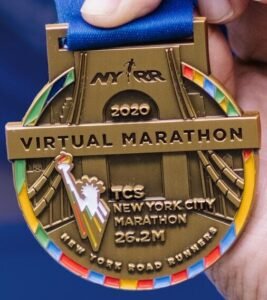
A beautiful addition to the collection that I should be getting soon. This will commemorate my 10th Marathon
Sixty dollars was an affordable price, and a spectacular medal a welcomed incentive. Not sure what else is included, but it is irrelevant. You had between October 17 and November 1 to complete the 26.2. This was just between 8 and 10 weeks away depending on the date I ran it. I settled for October 24th so I could have an extra week of training and a spare one should anything go wrong.
Because of an injury some and health issues I went through last year, I hadn’t run more than 10 kilometers straight during the year. I had gone longer when including walking breaks. Run/walk intervals allowed me to get my fitness and aerobic capacity back. I also had to shed a few extra pounds. So I prepared a NYC plan focusing on steady increment of mileage, management of effort and heart rate control based on full recovery. Finishing time for this one was a secondary consideration. Finishing strong and without injury was more than enough reward.
My plan called for a few running miles at the start and from there on, run half mile and walk another half. Yes, a lot of walking, but I didn’t want to get my heart rate so high that that it would become unsustainable and force me to walk the last 10 miles. As I trained and was able to run more miles, I felt the recovery periods were way too long, so I adjusted. My longest training session was 17 miles, my longest non-stop run was 9 miles. My run/walk intervals got set to .6/.4. I was ready to go.
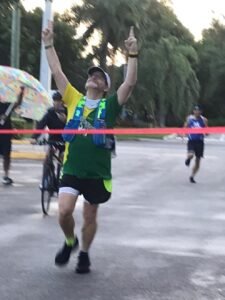
Thanking God as I cross the finish line, surrounded by my running family.
Then, October 24th, 2020 arrived and at 2:26AM I hit the road. I ran the first 6 miles and met with Bill and Rita about 3:30 am for my first water and resupply stop. From there on, I started my run/walk protocol. At first it bothered me to walk when I still felt strong, but I knew it was an investment towards the last miles, and it paid off. At mile 10, I met up with Ted, who accompanied me the next 8 miles. Up to this point my wife followed me in the car, so slow that a cop found it suspicious enough to stop her.
Close to Mile 17, the most amazing thing happened. A caravan of my running buddies passed by with horns, cowbells, yelling and screaming. A shot of adrenaline invaded my body. They were going to our regular Saturday starting spot, where I met them to pick up my last supply cache from Patrick. Once there, I kept going for my last 8.2 miles with a few friends here and there. Ruben stuck with me and ran/walked with me the whole way, sacrificing his training for the day.
I may have missed then entrance to First Avenue from the Queensboro Bridge, but what my buddies from the No-Club Runners had at the finish line was equally impressive. I choked as I ran towards the line through a tunnel of screaming, yelling, cowbells, paparazzi and the support of those who were genuinely elated to share this moment with me. It was not Central Park, but I wouldn’t trade this finish line for it.
Final time accepted by NYRRC was 5:28:14. Almost two minutes below my wildest expectations.
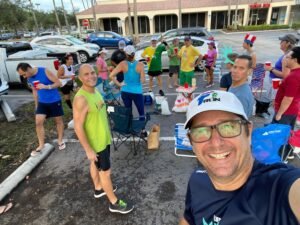
Post-marathon celebration with my buddies from the No-Club Runners. What an amazing bunch of people.
I have been asked if I count this experience as a completed marathon. If I count it as my 3rd time completing NYC? The answer to both questions is yes. The answers are affirmative because this was an established and scheduled race. It did not happen this year because of Covid. This is not a race that popped up to sell you a medal taking advantage of the pandemic. There was a strict time frame on when to do complete the specific distance. This was not a “run what you want, when you want” scheme. On a personal level, it is not like I’ve ran 26.2 so often that I lost count. This is just my 10th time at the distance.
This experience taught me is that I am mentally stronger than I thought. That if I am smart about how to approach certain challenges, adjusting as I work towards them, I can achieve and complete them successfully and safely. That the marathon is still a great adversary, but no unconquerable. And, above all, that I have a running family for which superlative adjectives to qualify them would make no justice to what they mean to me.



